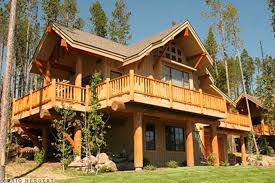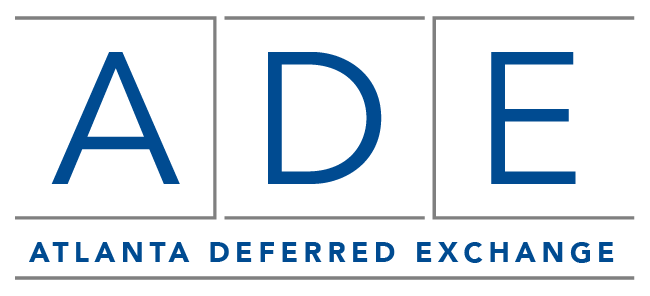
A number of investors own both a primary residence and an investment property or two. They often have an interest in selling one and transitioning into the other, while limiting the tax liability through smart tax planning. While the IRS has issued direct guidance on this subject, there is still confusion among many investors about whether this is possible, and if so, the rules that apply. A brief description of the exclusions allowed under Section 121 (relating to personal residences) and Section 1031 (investment property) may provide some clarity.
In 1997, there were major changes to Section 121, the regulation that deals with gains on personal residences. Previously, if you were 55 or older, you could use your once-in-a-lifetime gain exclusion of $125,000 on the sale of your home. But in 1997, the amount of gain that could be excluded was increased to $500,000 for couples filing jointly, and $250,000 for individuals, as long as they had owned their home for at least 24 months. Additionally, similar to Section 1031, there were no limits on the number of times you could use the exclusion, with the caveat that under Section 121, the home had to have been owned for 2 years or more.
In 2004, the IRS further modified Section 121 to include several requirements if you change the use of investment property that is part of a 1031 exchange. The first is that you must have lived in the property for two years of a minimum five year ownership period and secondly, any depreciation taken after 1997 has to be recaptured.
So, based on these changes, is there a way to maximize both the Section 121 gain exclusion and the inherent benefits of a 1031 exchange?
 Let’s look at some examples. Consider Jenny and Dave who are two years away from retirement and have owned a piece of appreciated investment real estate for 10 years. They decide to sell it, do a 1031 exchange and use the sale proceeds to buy a replacement property free and clear in a beautiful mountain resort community where they dream of retiring. As part of a coordinated plan, they rent the new property for two years—coinciding with their last two years of work. Upon retirement, they sell their current home and realize a gain on the sale of $400,000- which is excluded under Section 121. At the same time, they discontinue renting their ski chalet (known as “changing use”), and move into it as their new primary residence.
In this instance, have Jenny and Dave structured their plan to gain the most tax deferral allowed and meet their goals? The answer is a qualified yes. They have realized their dream to move into their ideal retirement home with no debt, and if they live in the property in two of the next three years, they will be able to hit the “refresh button” and again access the full $500,000 gain exclusion when they sell subject to the restrictions below.
Let’s look at some examples. Consider Jenny and Dave who are two years away from retirement and have owned a piece of appreciated investment real estate for 10 years. They decide to sell it, do a 1031 exchange and use the sale proceeds to buy a replacement property free and clear in a beautiful mountain resort community where they dream of retiring. As part of a coordinated plan, they rent the new property for two years—coinciding with their last two years of work. Upon retirement, they sell their current home and realize a gain on the sale of $400,000- which is excluded under Section 121. At the same time, they discontinue renting their ski chalet (known as “changing use”), and move into it as their new primary residence.
In this instance, have Jenny and Dave structured their plan to gain the most tax deferral allowed and meet their goals? The answer is a qualified yes. They have realized their dream to move into their ideal retirement home with no debt, and if they live in the property in two of the next three years, they will be able to hit the “refresh button” and again access the full $500,000 gain exclusion when they sell subject to the restrictions below.
 Now, let’s consider the example of Pam and John who sold a tract of investment land and using a 1031, bought a beautiful lake front house near a golf course in 2015. They rented the property until 2019, when they retired and moved in. Because the rental activity is taking place after 2008, they will be subject to the prorata formula discussed above when they eventually sell the property. If they sell it in 2023, they would have effectively split their ownership equally between 4 years of rental use (section 1031) and 4 years as a primary residence (section 121). If they have a $500,000 gain on the sale of the property, they would then divide the total years of rental use by the total years of ownership to determine the percentage of the gain that will be taxable. In this instance, four of the eight years, or 50%, would be subject to tax.
Conversely, the same formula applies to arrive at the amount of gain that would be eligible for the primary residence exclusion. In the previous example, 50% or $250,000, would be taxable and the other 50%, or $250,000, would be tax-free under the Section 121 gain exclusion. The longer the couple own and use the property as their personal residence, the higher the percentage of gain that will be eligible for the Section 121 gain exclusion becomes. (For example, if they don’t sell the property until 2027, then 66% or $333,333 of the gain would be eligible for the 121 exclusion.)
Now, let’s consider the example of Pam and John who sold a tract of investment land and using a 1031, bought a beautiful lake front house near a golf course in 2015. They rented the property until 2019, when they retired and moved in. Because the rental activity is taking place after 2008, they will be subject to the prorata formula discussed above when they eventually sell the property. If they sell it in 2023, they would have effectively split their ownership equally between 4 years of rental use (section 1031) and 4 years as a primary residence (section 121). If they have a $500,000 gain on the sale of the property, they would then divide the total years of rental use by the total years of ownership to determine the percentage of the gain that will be taxable. In this instance, four of the eight years, or 50%, would be subject to tax.
Conversely, the same formula applies to arrive at the amount of gain that would be eligible for the primary residence exclusion. In the previous example, 50% or $250,000, would be taxable and the other 50%, or $250,000, would be tax-free under the Section 121 gain exclusion. The longer the couple own and use the property as their personal residence, the higher the percentage of gain that will be eligible for the Section 121 gain exclusion becomes. (For example, if they don’t sell the property until 2027, then 66% or $333,333 of the gain would be eligible for the 121 exclusion.)
